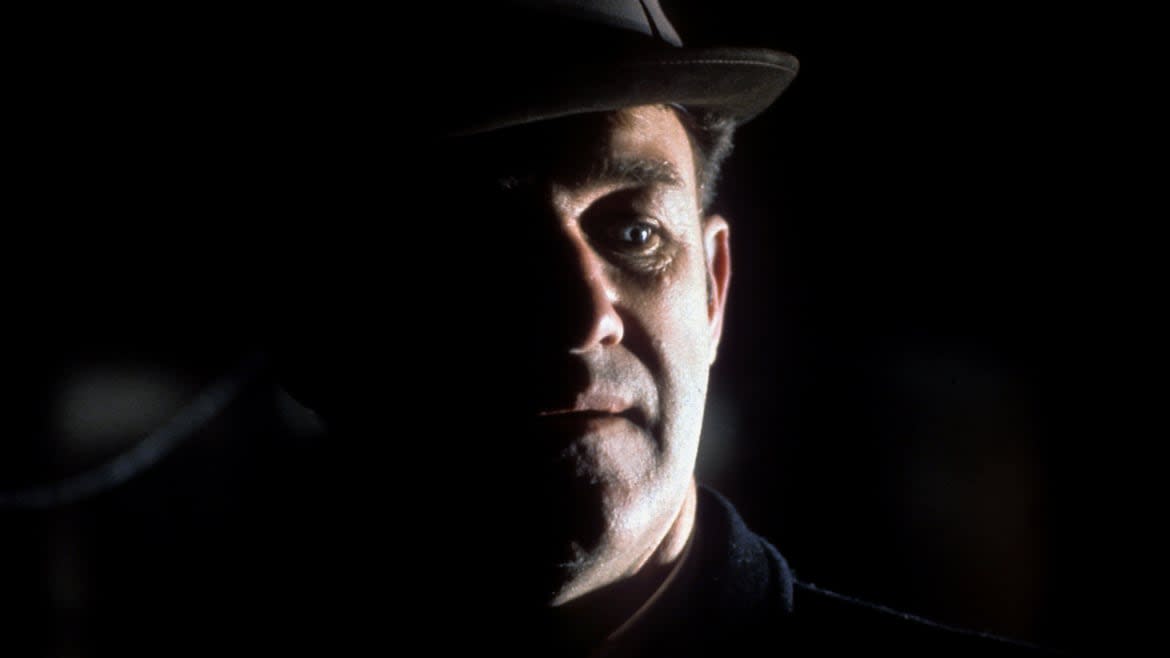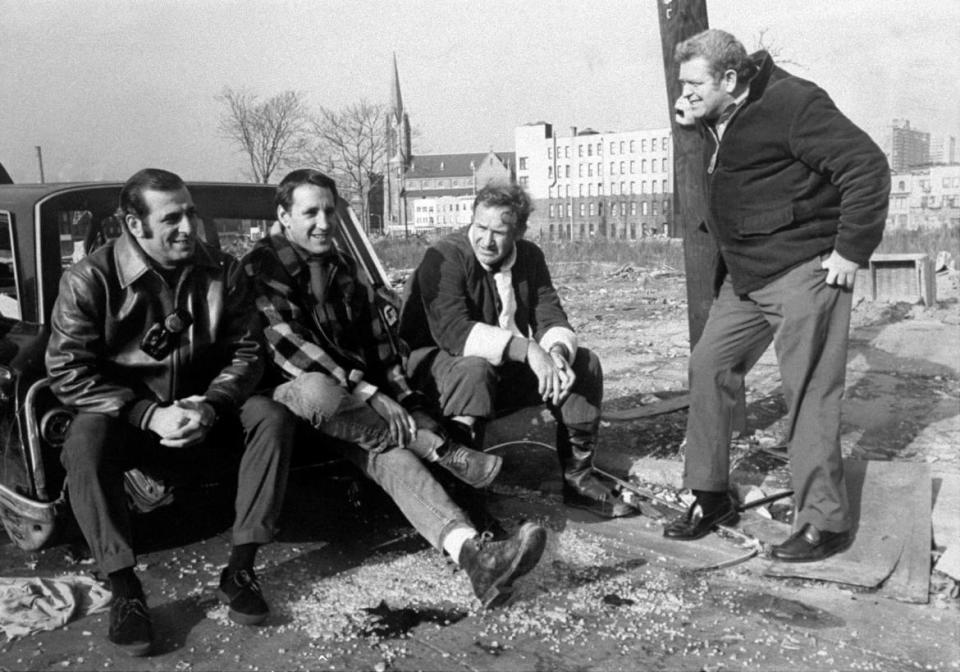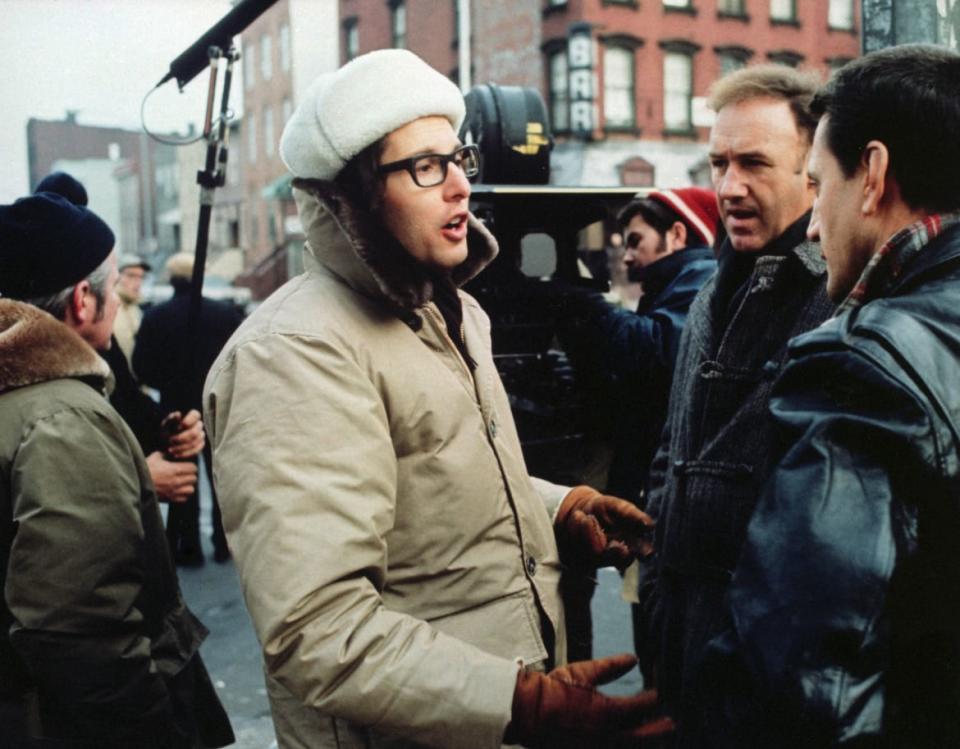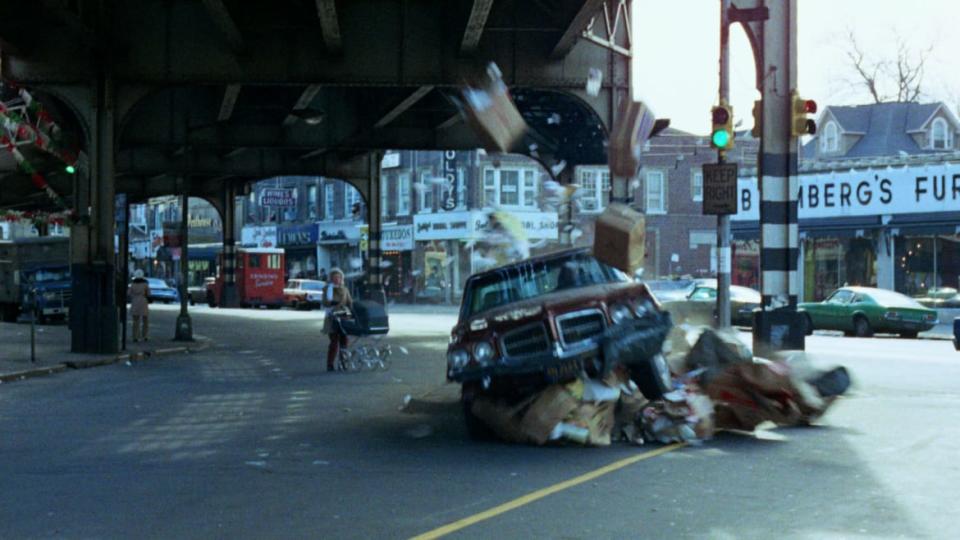Why ‘The French Connection’ Still Gets Under Our Skin

- Oops!Something went wrong.Please try again later.
- Oops!Something went wrong.Please try again later.
- Oops!Something went wrong.Please try again later.
- Oops!Something went wrong.Please try again later.
- Oops!Something went wrong.Please try again later.
- Oops!Something went wrong.Please try again later.
Warning: Spoilers
William Friedkin was one of those legendary Hollywood characters whose career really did begin in the mailroom. It just wasn’t the mailroom of a major studio. Rather, Friedkin started out in the more humble environs of Chicago’s WGN-TV. By the time he’d been there a couple of years, he was setting up shots for the station’s local shows and before long he was directing shows and news segments himself. He was 18 years old. After that he shot hundreds of hours of local television and then, in his mid-twenties, became a documentary filmmaker widely respected for such films as The Thin Blue Line. Right out of the gate, Friedkin made his mark with The People vs. Paul Crump, which helped win a reduced sentence for its wrongfully convicted subject.
Friedkin, who died on Monday at 87, would go on to make several commercial films, including Good Times starring Sonny and Cher, but it was his documentary background that attracted movie producer Phil D’Antoni. In fact, it is fair to say if Friedkin had never been a documentary filmmaker, he never would have gotten to direct The French Connection, which would become not only his greatest film but one of the greatest films ever made.
The French Connection is one of those rare films that completely captures a particular time and place—in this case, New York in the early ’70s—and at the same time seems completely timeless, even now. It was an open wound when it was released, and an open wound it remains, its power to shock undiminished by time. How that all happened, how a dark little movie shot on a shoestring budget became a classic that was nominated for eight Academy Awards and won five, including Best Picture, is a story that is equal parts chance, skill, and sheer dumb luck.
Legendary ‘The Exorcist’ Director William Friedkin Dies at 87
D’Antoni had the rights to Robin Moore’s 1969 true crime account of how two New York cops made the largest heroin bust in history in 1961. But while he had no trouble with fictionalizing the story, he wanted the movie to look and feel like a documentary.
Friedkin was all for that, and so were the two cops who inspired the story. Eddie Egan and Sonny Grosso worked closely at every stage with the filmmakers and the actors hired to portray them (in the movie, Egan became Popeye Doyle, played by Gene Hackman, and Grosso was Cloudy Russo, played by Roy Scheider). For weeks, the two cops dragged the movie makers and actors down the meanest streets in New York, showing them the city’s underbelly, with its dealers and gangsters, its drug busts, shooting galleries, and stakeouts.
On one of their excursions, the detectives drove Friedkin a mere eight minutes north of his home on New York’s Upper East side to Harlem to witness the city’s hardcore drug scene firsthand. According to Grosso in The Making of the French Connection, Friedkin mused over how close—a few city blocks—he lived to the multitude of apartments occupied by junkies and dealers.
Years later, actor Roy Scheider recalled those tours with a shiver: “I don’t think I even got out of the car the first four or five nights we went out.”

From left to right, Detective First Grade Sonny Grosso and Detective First Grade Eddie Egan with actors Roy Scheider and Gene Hackman, during filming of The French Connection.
D’Antoni and Friedkin burned through two screenwriters before hooking up with New York Times reporter Ernest Tidyman, who was also the author of Shaft. Tidyman’s screenplay became the working script, although Friedkin later insisted, “I don’t think there is a line in it, or a word, that Tidyman wrote.”
Most of the dialogue, he insisted, was improvised on the spot.
Certainly the most memorable line in the movie—“Have you ever picked your feet in Poughkeepsie?”—came directly from Eddie Egan, who liked to pop the question on suspects he was interrogating as a means of confusing them.
It’s certainly unsettling when we first hear Popeye Doyle scream the question at a terrified suspect in the movie. It’s also our first inkling that Doyle himself may be a little unhinged.
Filming began in the winter of 1970, one of the coldest on record, with temperatures rarely above freezing and often below zero. Cinematographer Owen Roizman recalled days so cold that filming became impossible because the cameras froze.
After every major studio had said no to the movie—“sometimes twice!” Friedkin recalled—Richard Zanuck, head of production at 20th Century Fox, greenlit the film with a $1.5 million budget at a time when the average movie cost twice that to produce. And so, where corners could be cut, they were. Which, ironically, helped: The production couldn’t afford to build sets so everything you see in the movie is authentic: Popeye’s depressingly crappy apartment, for example, is a real depressingly crappy apartment. D’Antoni and Friedkin were getting exactly the “induced documentary” look they were after for free.
Or, as Fox’s Zanuck put it, “Other pictures look like movies. This looked like the real thing.”

William Friedkin and Gene Hackman on the set of The French Connection.
The casting process wasn’t easy—money for a big name wasn’t there, and anyway Zanuck didn’t think movies stars were right for the seedy, dark unadvertised version of New York showcased in the film. But the actors considered for the Popeye Doyle part especially reveal how hard it was to find an actor who could convincingly project Egan’s contradictory and outsized character on the big screen. The options ran from the merely wrong (Peter Boyle, Jackie Gleason) to downright nutty (Jimmy Breslin).
Friedkin was cool with the idea of idea of avoiding big-time movie stars, but when it came to Gene Hackman, he wasn’t crazy about that either. “I instantly thought it was a bad idea,” Friedkin said. At the behest of Richard Zanuck, Friedkin and D’Antoni met Hackman for lunch in the Oak Room at The Plaza Hotel in New York. “It was a great lunch,” according to Hackman, who described Friedkin as a “very funny, wonderful, socially adept gentleman.” Friedkin couldn’t disagree more: “I almost fell asleep at the lunch, you know. I really found it boring.”
Egan and Grosso didn’t see Hackman as right for the role either, but by then there was no runner up for the part, so Hackman played Popeye Doyle, and good luck imagining anyone else in that role.
Friedkin took full credit for casting Fernando Rey as Alain “Frog One” Charnier, the drug smuggler from Marseille. More precisely, Friedkin confessed that he told his casting director about an actor he’d seen in Luis Buñuel’s Belle de Jour and asked that he be hired. But when he went to the airport to meet the actor, he realized his casting director had hired another actor from Belle de Jour. At first he wasn’t sure about Rey, with his “little goatee and aristocratic manner.” Worse, Rey was Spanish and barely spoke French. So, Friedkin began filming with a script he wasn’t wild about and two leading actors he didn’t like.
William Friedkin’s ‘Cruising’: Al Pacino Doing Poppers at a Gay Club Is More Important Than Ever
The one thing D’Antoni insisted on including was a chase scene, and not just any chase scene. D’Antoni had also produced Bullitt, released two years before, which had set the bar for chase scenes. D’Antoni demanded that the French Connection crew do better. So Friedkin designed a chase scene with the assistance of stunt driver Bill Hickman, who plays the fed who gets shot at the end of the movie but who was also behind the wheel of the Dodge Charger in Bullitt.

The car chase where Gene Hackman’s character dodges a woman with a baby carriage from The French Connection.
No knock on Bullitt, but after the chase scene in French Connection, you kind of wonder why anyone ever bothers trying to top it. Once Popeye Doyle commandeers a Pontiac and follows a subway car on an elevated track through Brooklyn, it is nearly impossible to believe that you’re not actually watching a cop risk his life and the lives of dozens of other drivers and pedestrians in his mad pursuit. One reason it looks so real is, like the aforementioned depressingly shitty apartment, it is real. Or a lot of it is. The film crew blocked off a few streets and controlled some of the traffic, but all too often, with Hickman standing in for Hackman at the wheel and Friedkin with a handheld camera in the back seat, they drove through real traffic right through Brooklyn at 90 miles an hour in the middle of the day, and the near escapes you see really were near escapes.
The only part of the chase scene that was blocked out and rehearsed beforehand was the moment when Hackman almost drives over a woman pushing a baby carriage.
As the movie progresses, the audience comes to understand that this is no ordinary action movie where bad guys get booed and good guys are cheered. Sometimes it’s even hard to figure who the bad guys are. Popeye Doyle is a foul mouthed racist; by movie’s end it’s hard to find an ethnic group he hasn’t slurred during the previous two hours. And he’s not just a bigot. He fatally shoots another cop by accident and very much on purpose shoots an unarmed man in the back after endangering what seems like half of Brooklyn in that high-speed car chase. Sometimes it’s easier to like Rey’s elegant drug smuggler more than his soiled adversary.
Most strikingly, the film never tells you how to feel about any of this, which is probably what makes the film so powerful even today. You walk in expecting an action picture and lord knows you get that in spades, but you also get a portrait of extremely flawed people, some of whom happen to be crooks and some who happen to be cops.
And the ambiguity extends right up to the last second of the action, when there’s an offstage gunshot and the screen goes blank. “You could never shoot that ending today,” Friedkin said several decades after the movie came out, and he’s right. Hollywood does not like a mess. It does not like leaving questions unanswered.
But it’s the ambiguity that keeps things interesting. Our questions about who shot whom hang in the air, just as our opinion of Doyle remains unresolved. It’s a picture that nags at you long after the final credits.
Was this intentional on the part of the filmmakers? Absolutely, even when it left them feeling miserable about themselves. Hackman, who took home the Oscar for Best Actor, in particular was terrified of what Egan had unleashed in him. It infuriated him when, after he filmed particularly brutal scenes, he could hear Egan crowing behind the cameras, “He’s even more me than me!”
In his memoir The Friedkin Connection, the director explained it best: “It was the era of the antihero. The temper of the times was irrational, fear and paranoia, both old friends of mine. Filmmakers and audiences no longer believed in a man on a white horse. We knew he was flawed, because we were flawed. Dirty Harry shot a suspect in cold blood, and audiences cheered. When Popeye shot the French hitman in the back at the end of The French Connection chase, there was applause in theaters across the country. When Popeye used the N-word, African Americans laughed, because they saw it as an honest portrayal of police attitudes. The films of the 1970s started to depict the moral ambiguity we recognized in ourselves.”
No movie has done that better than The French Connection.
Get the Daily Beast's biggest scoops and scandals delivered right to your inbox. Sign up now.
Stay informed and gain unlimited access to the Daily Beast's unmatched reporting. Subscribe now.

